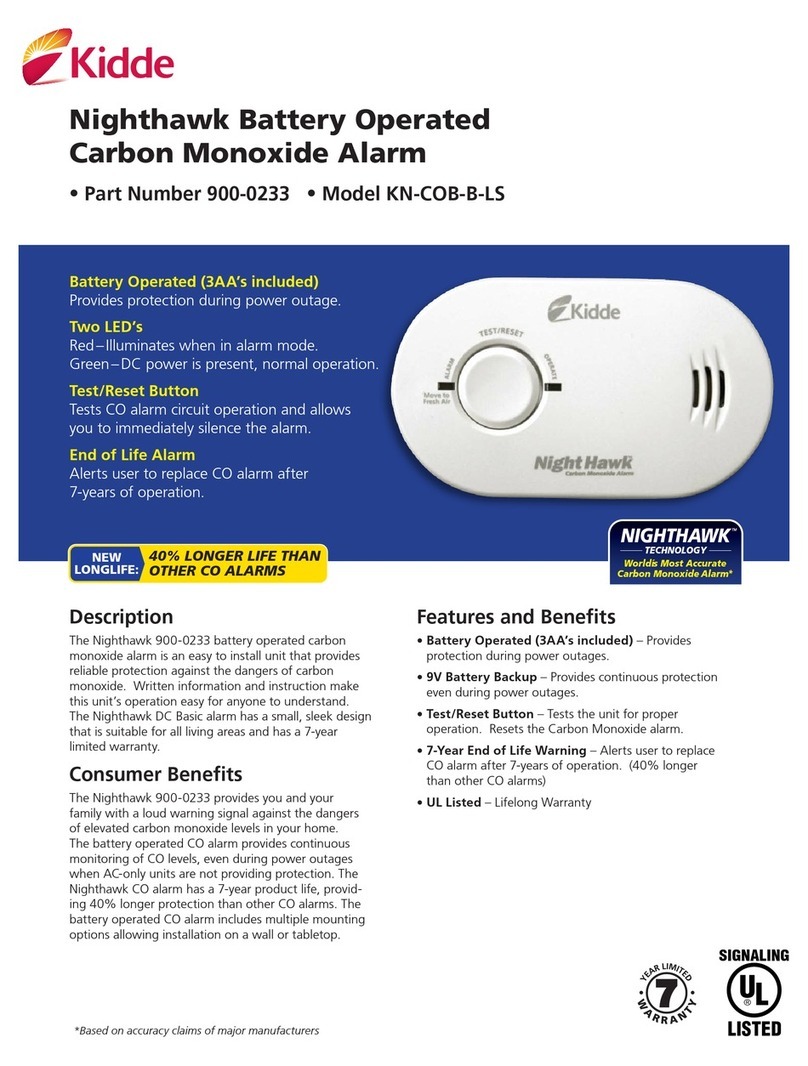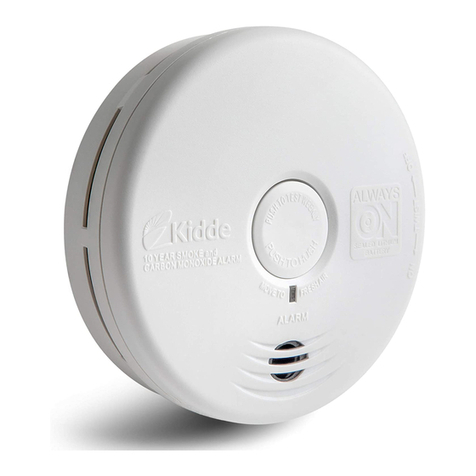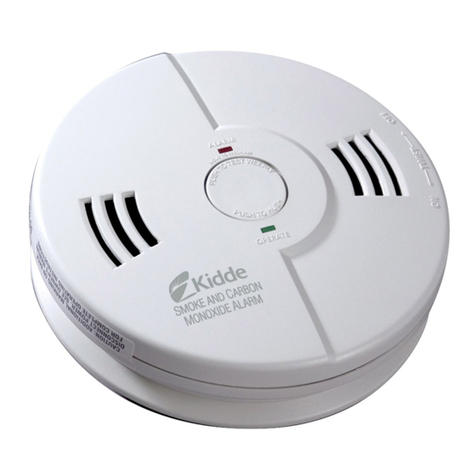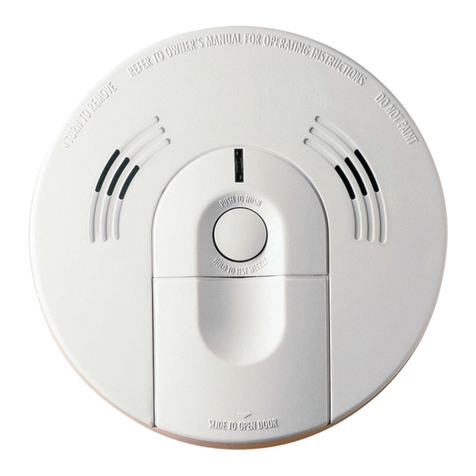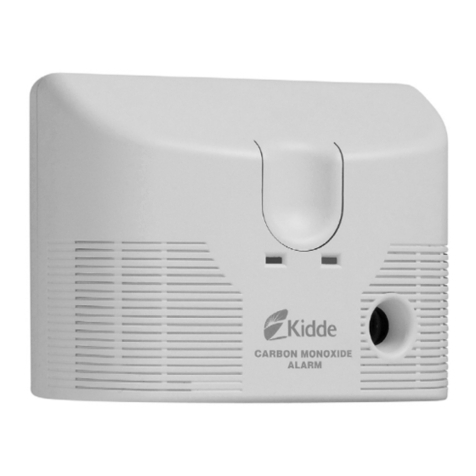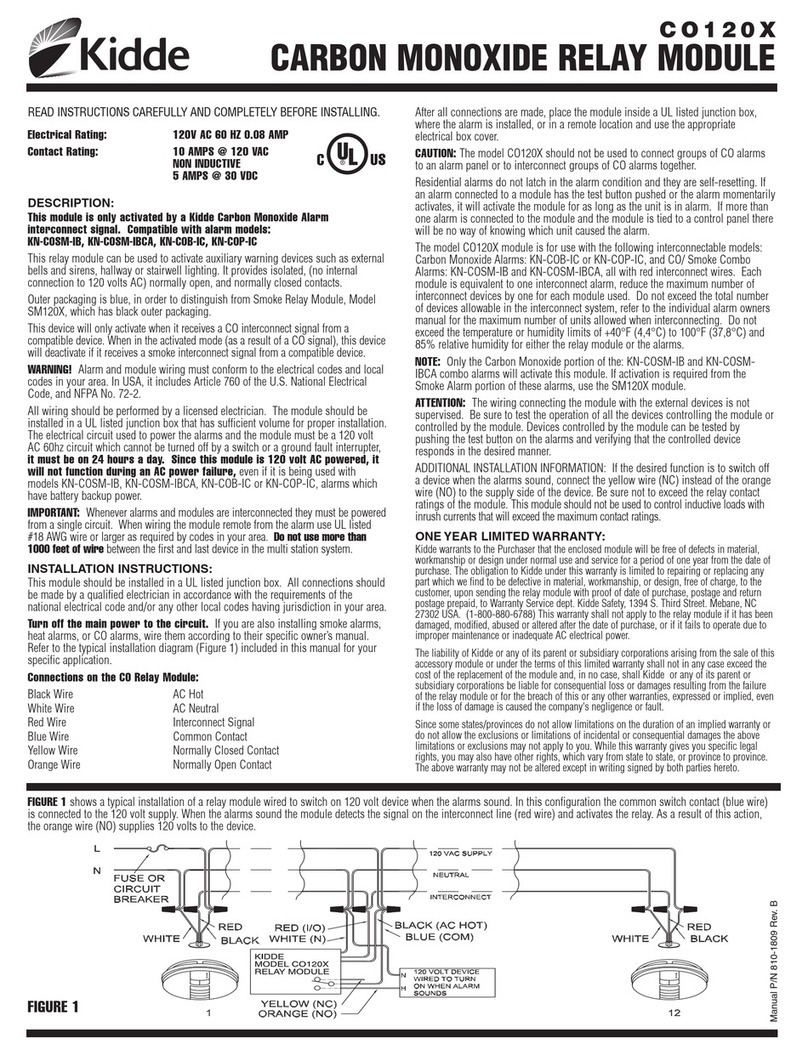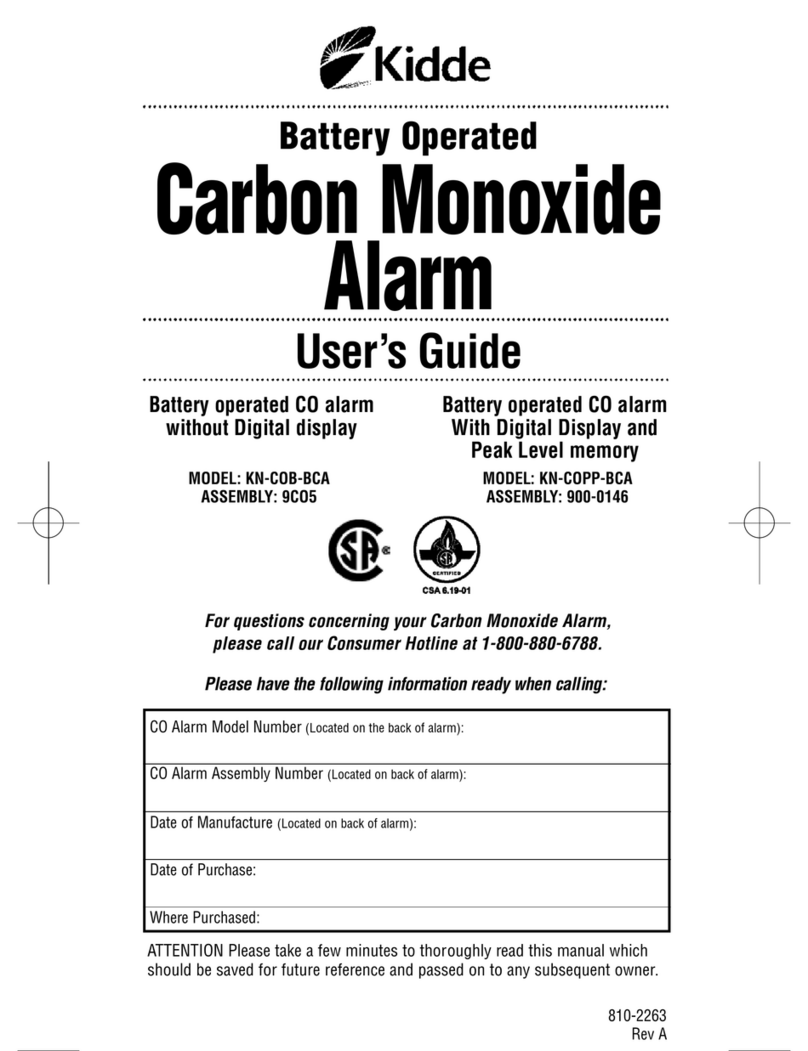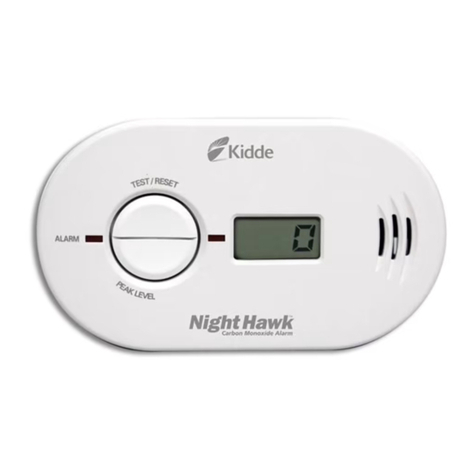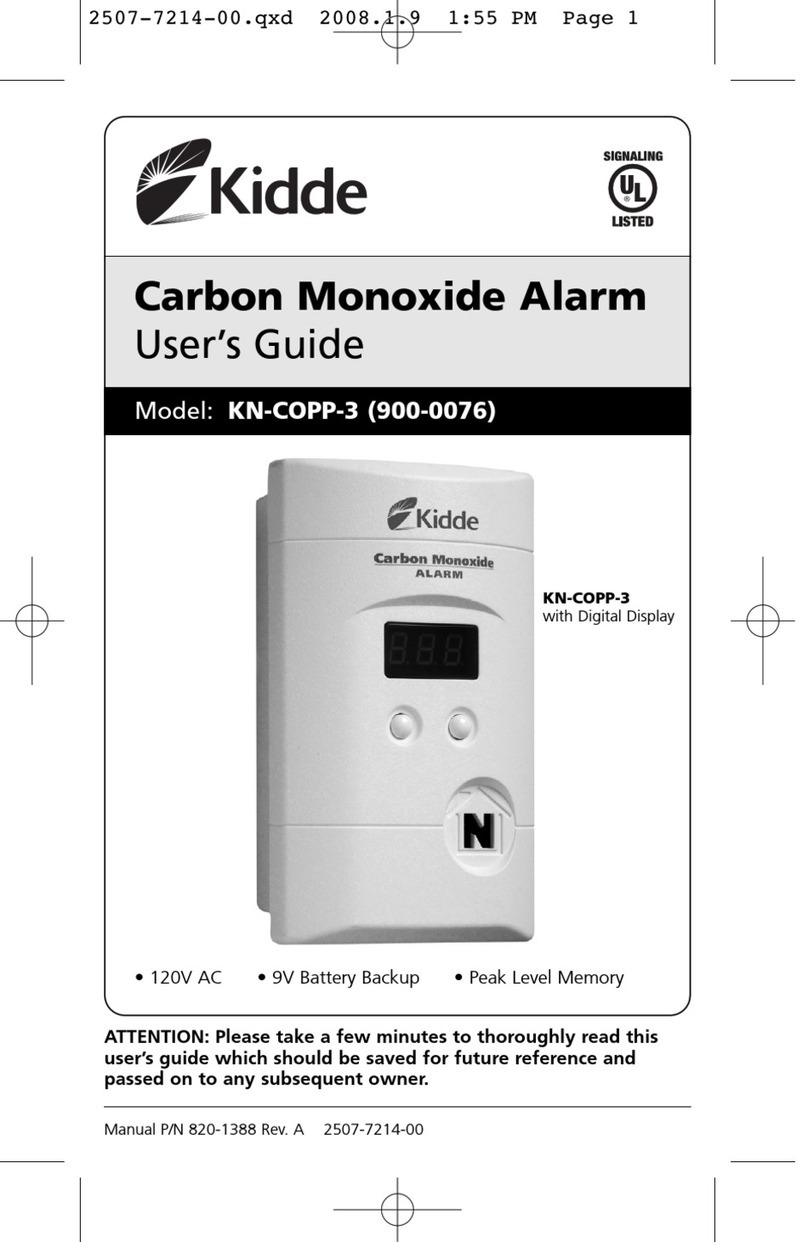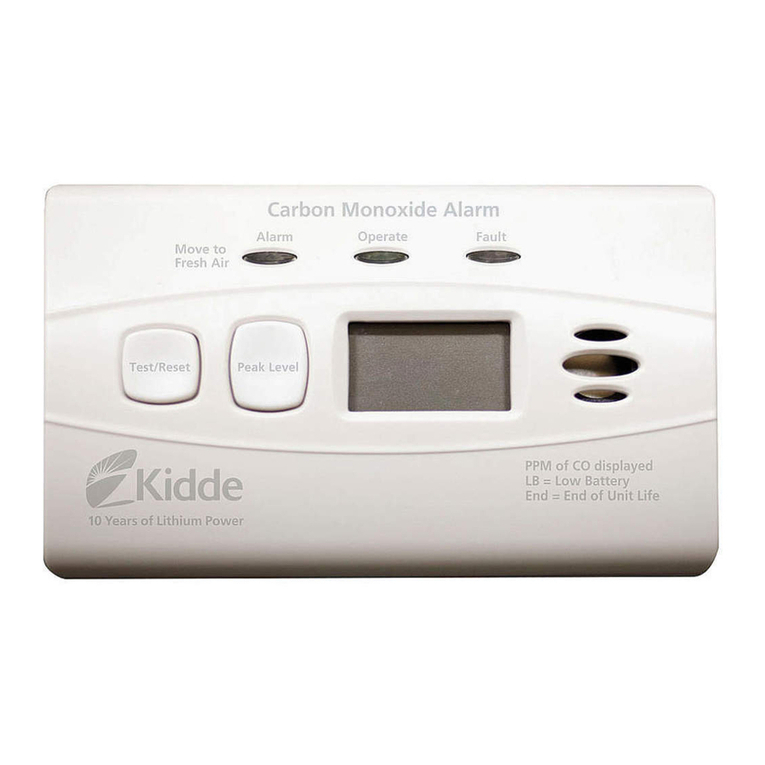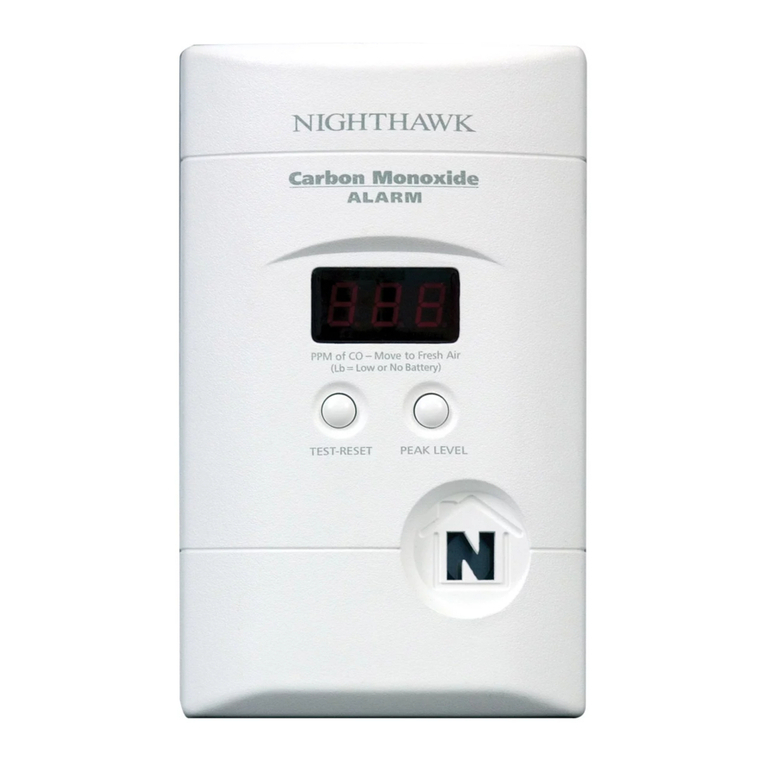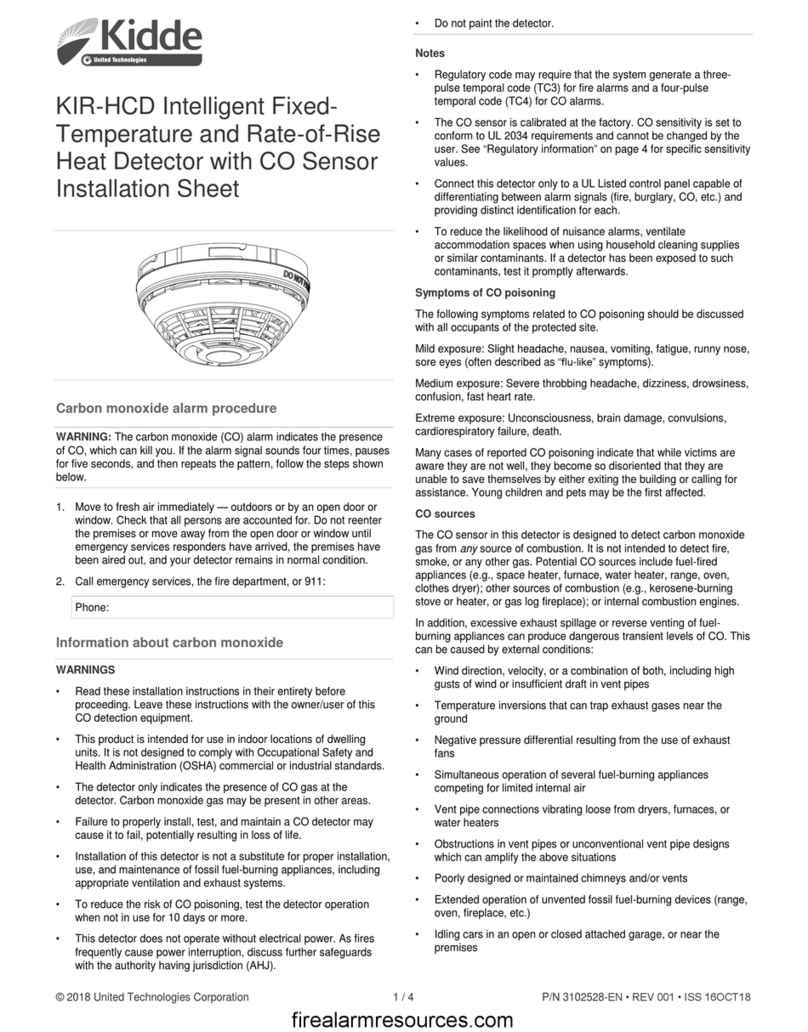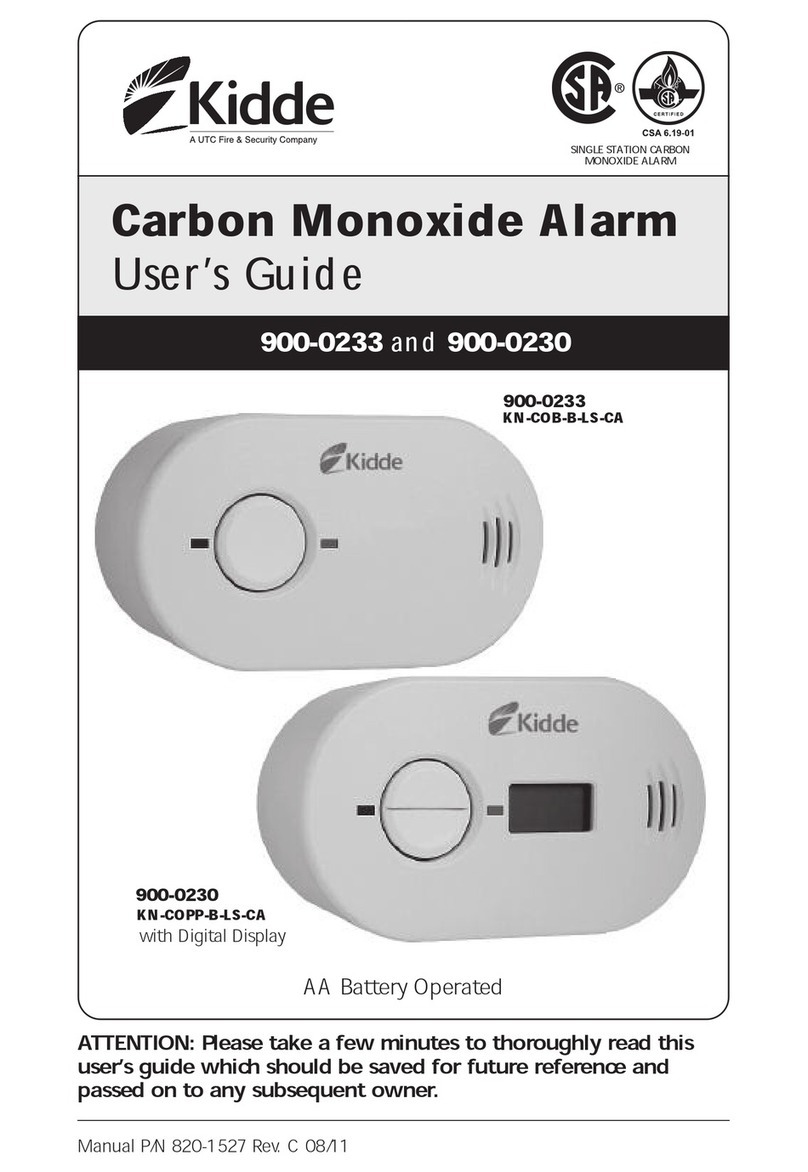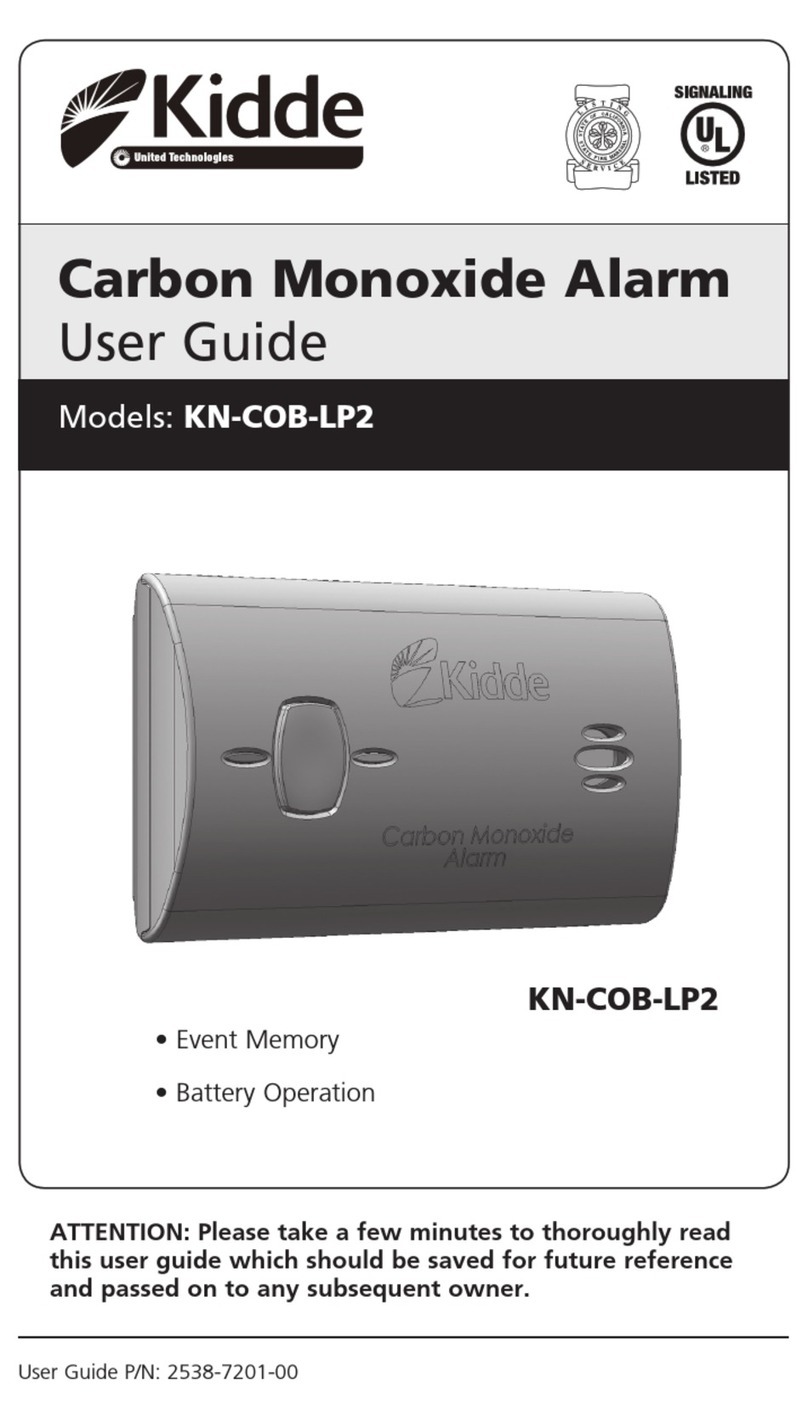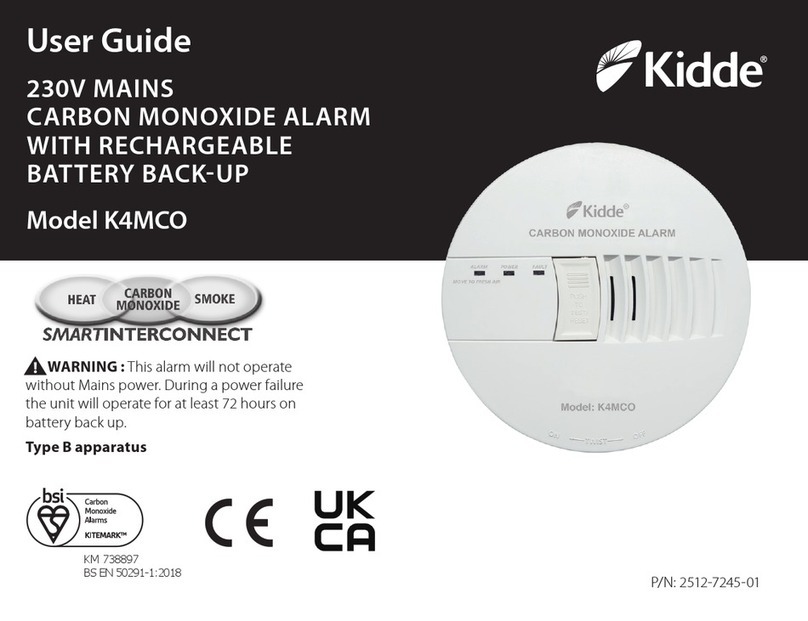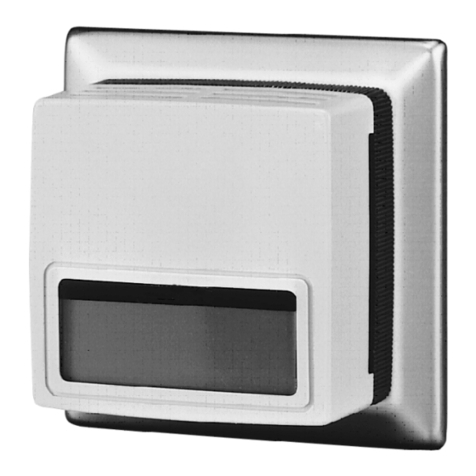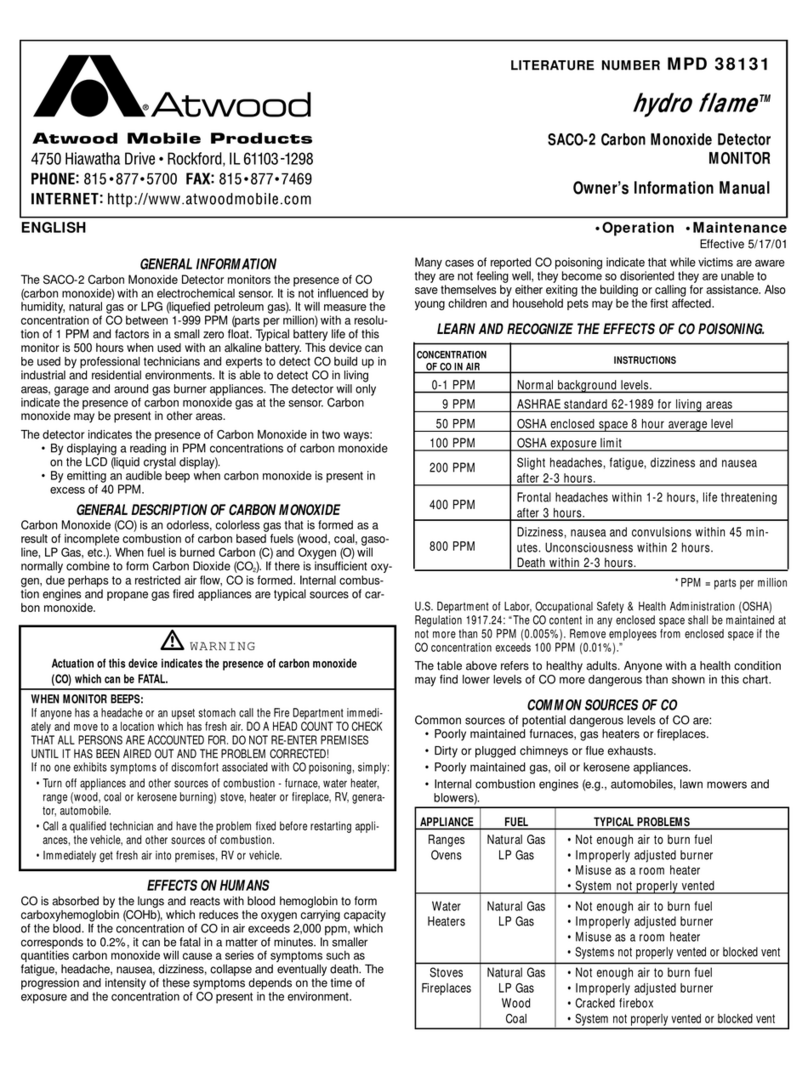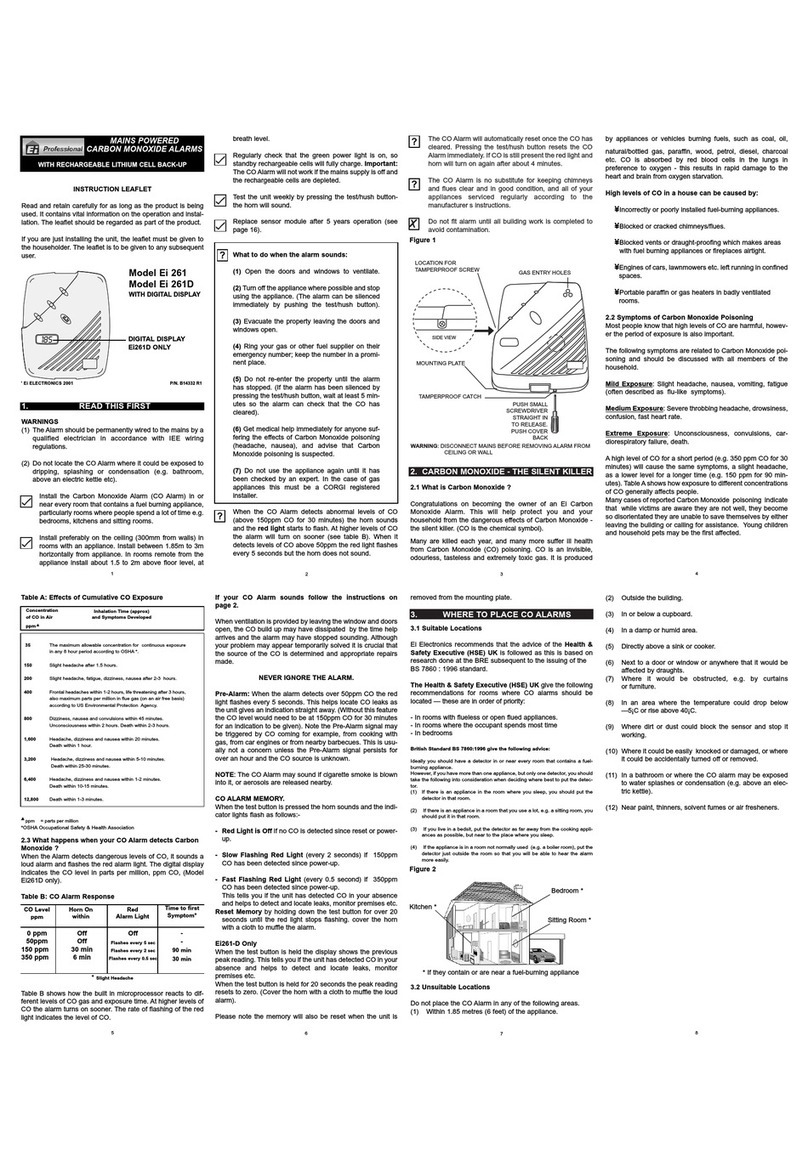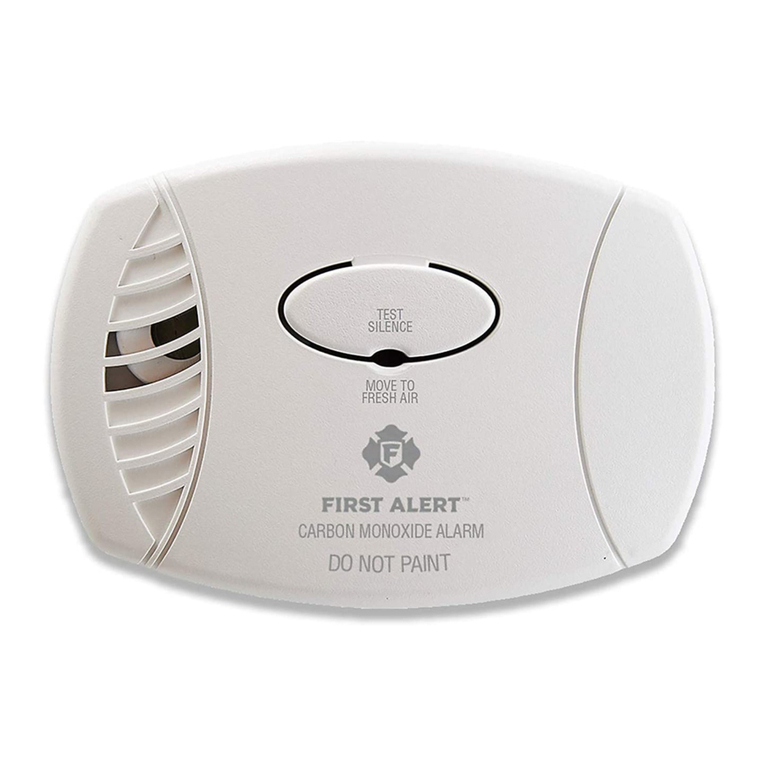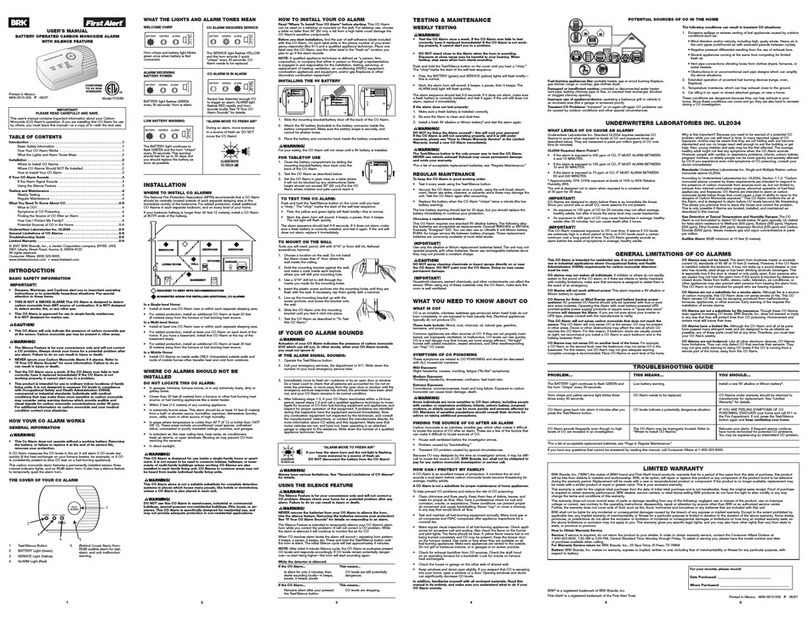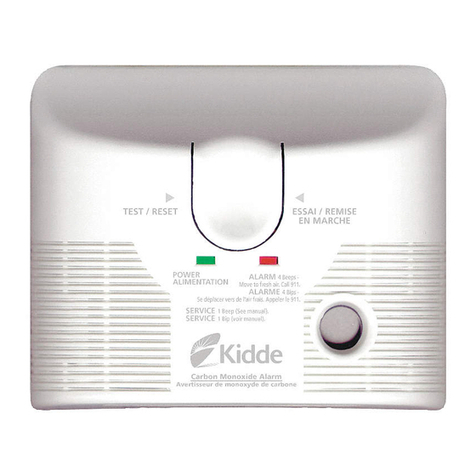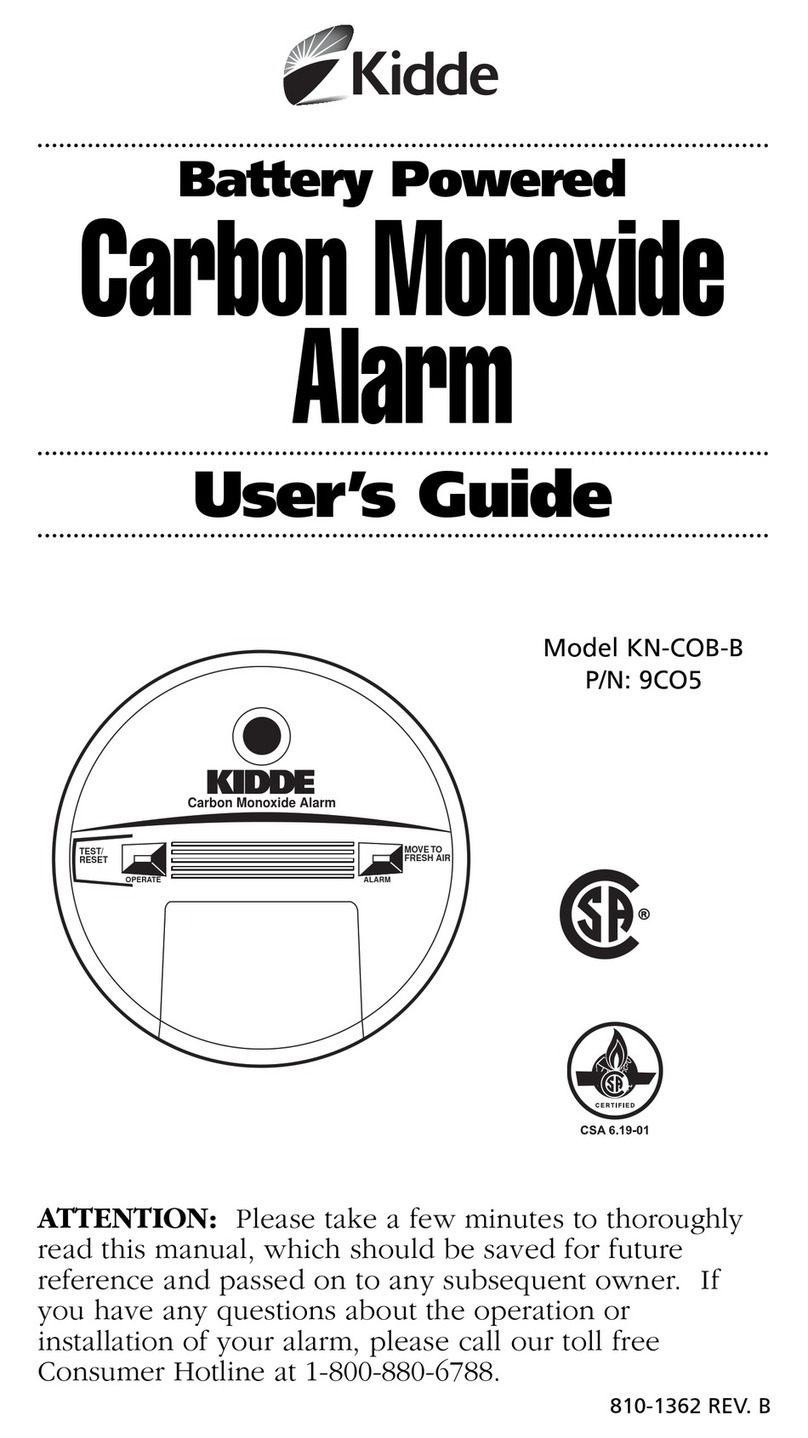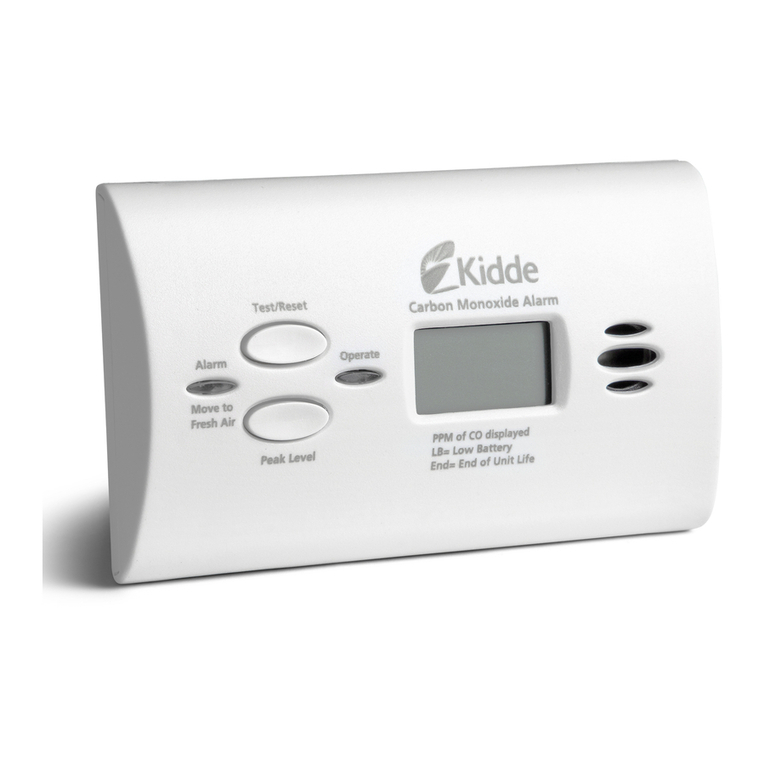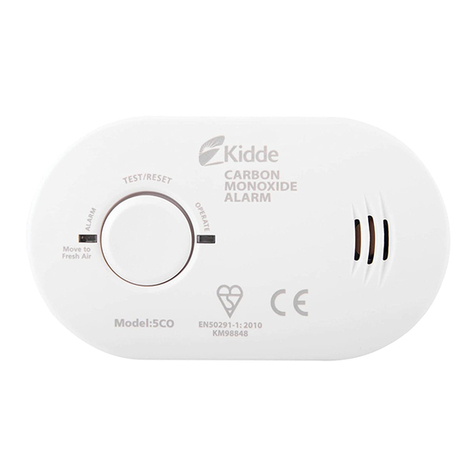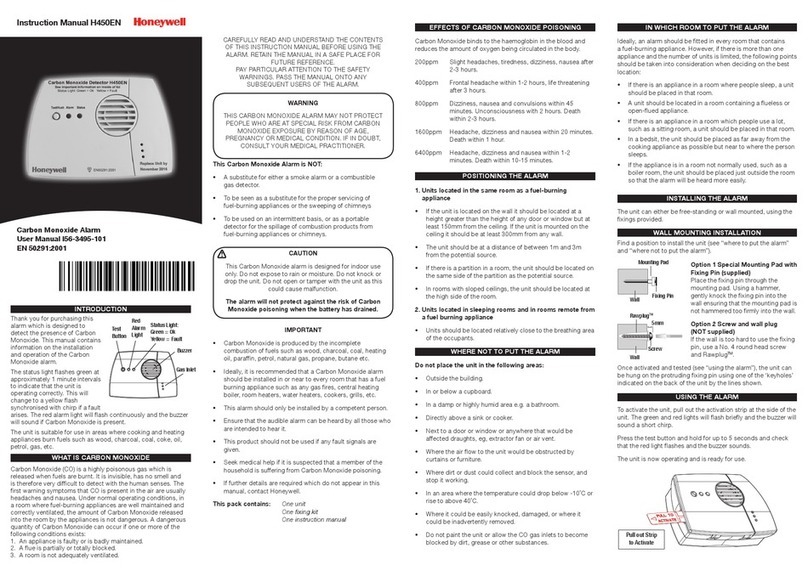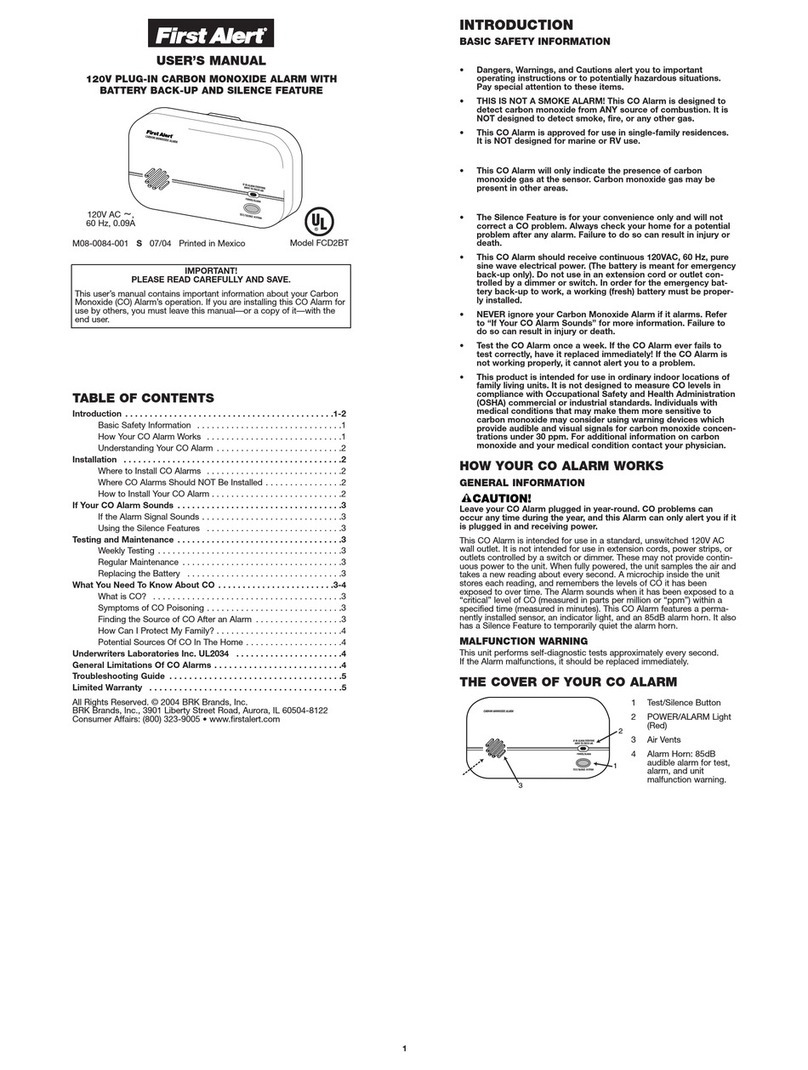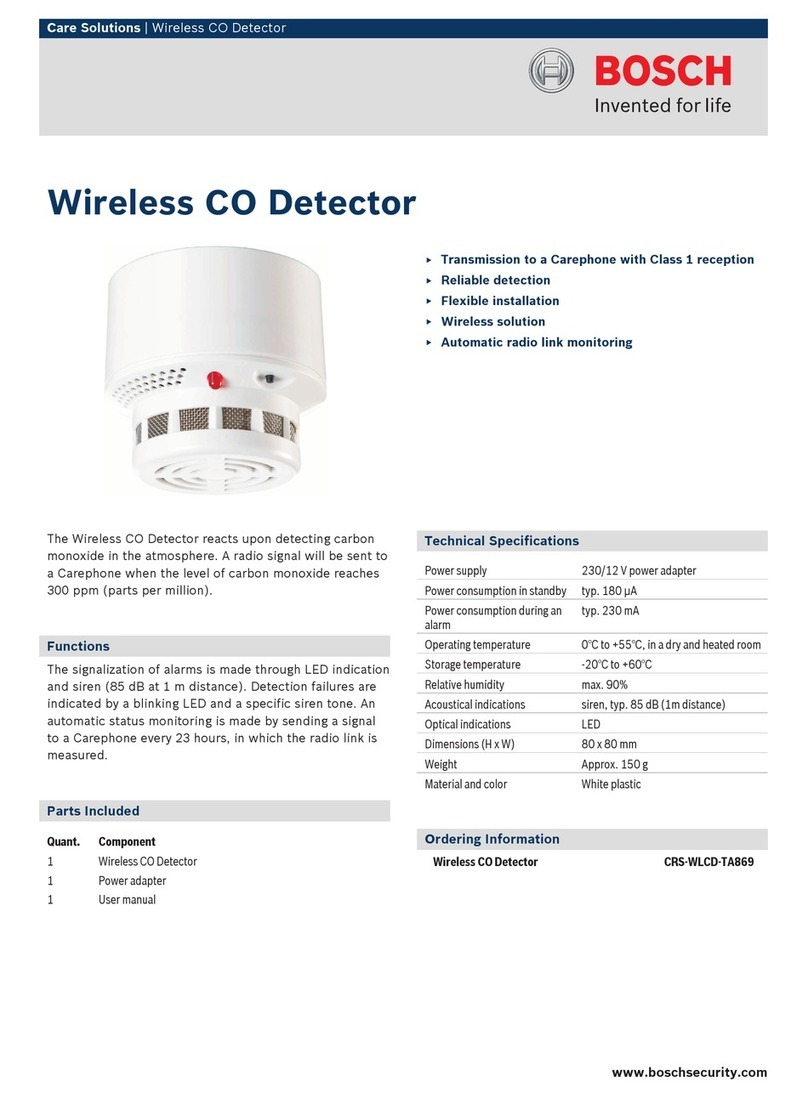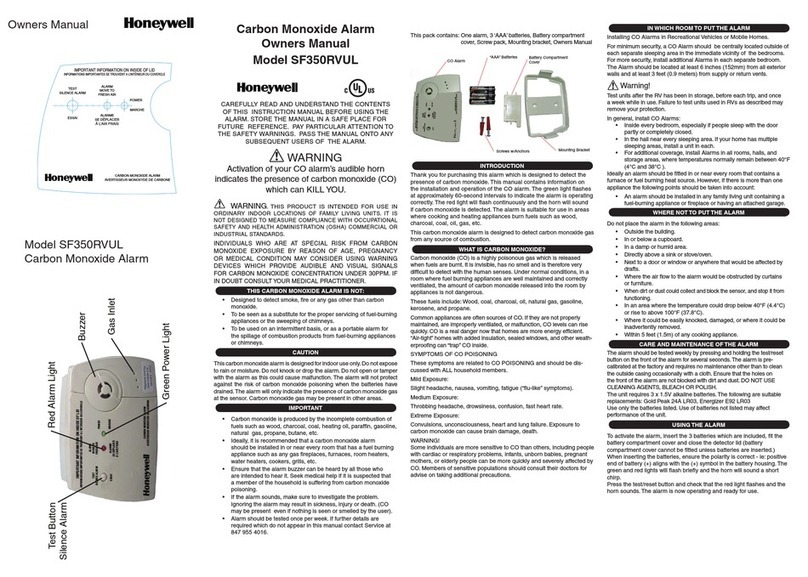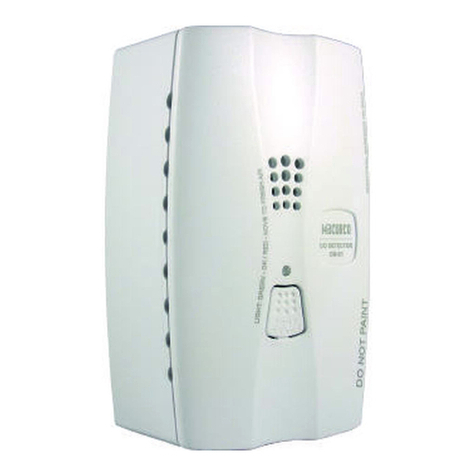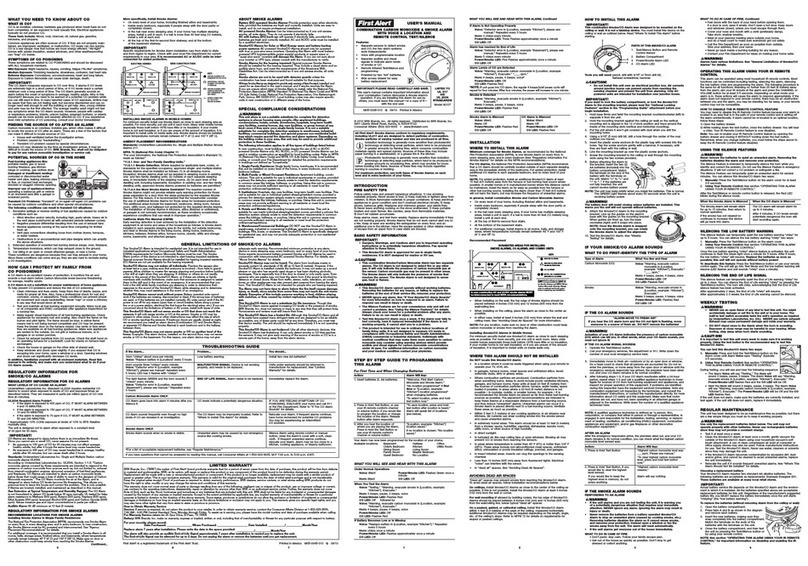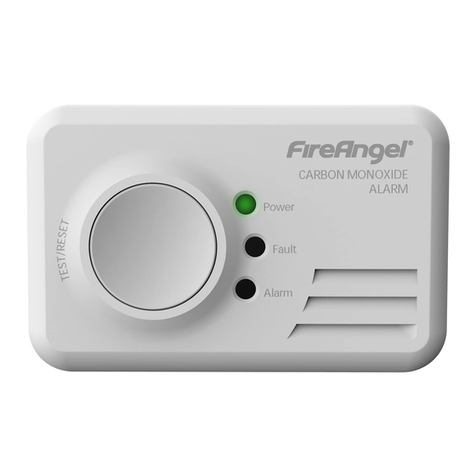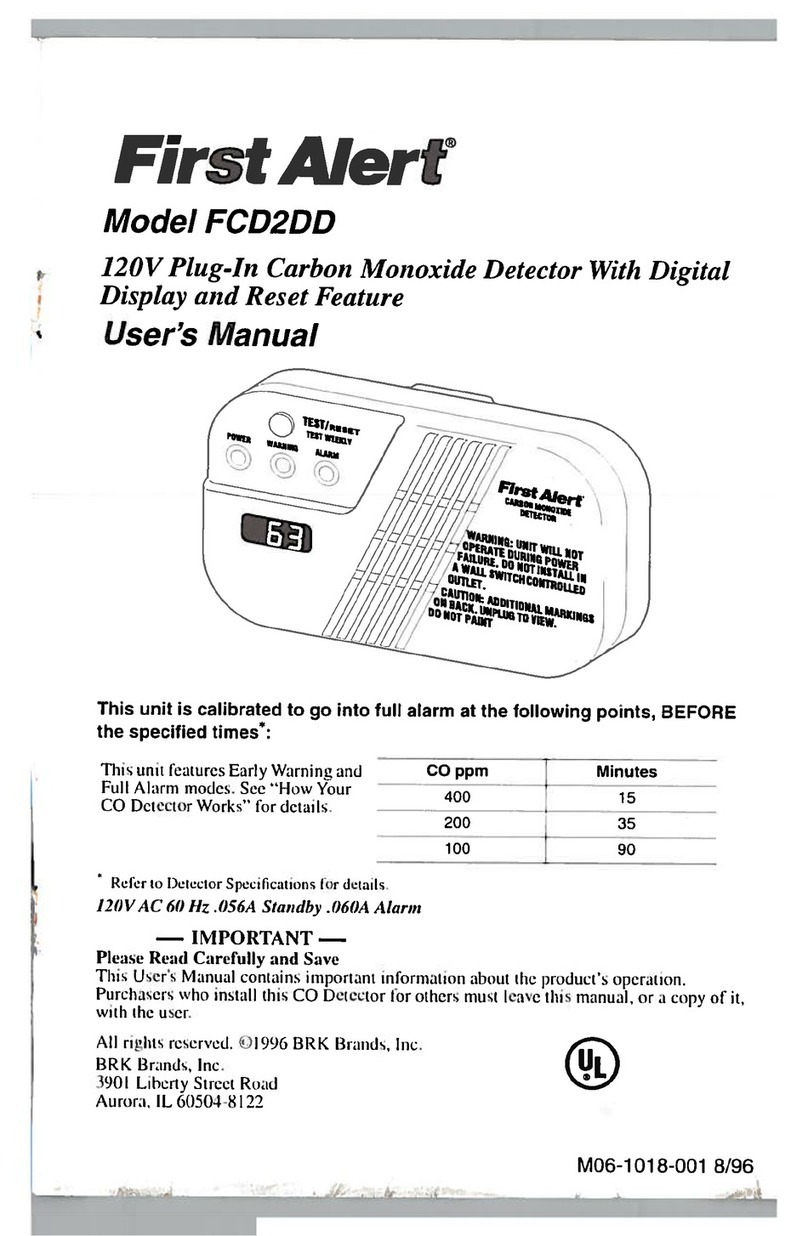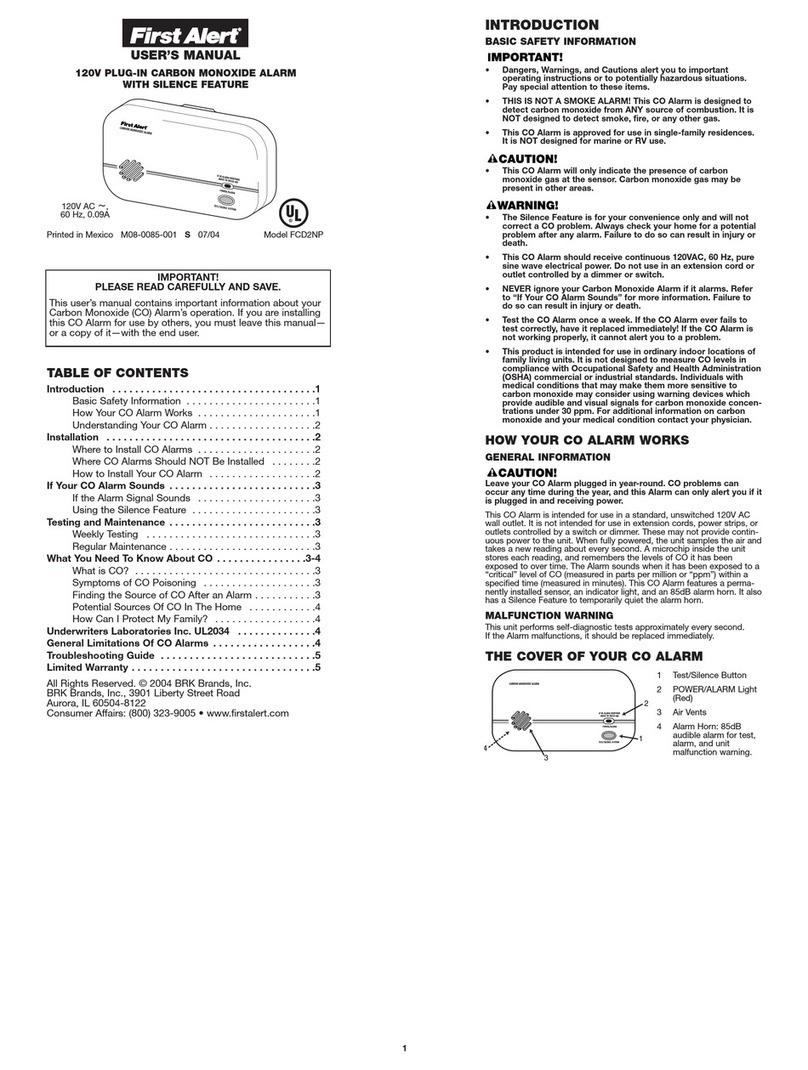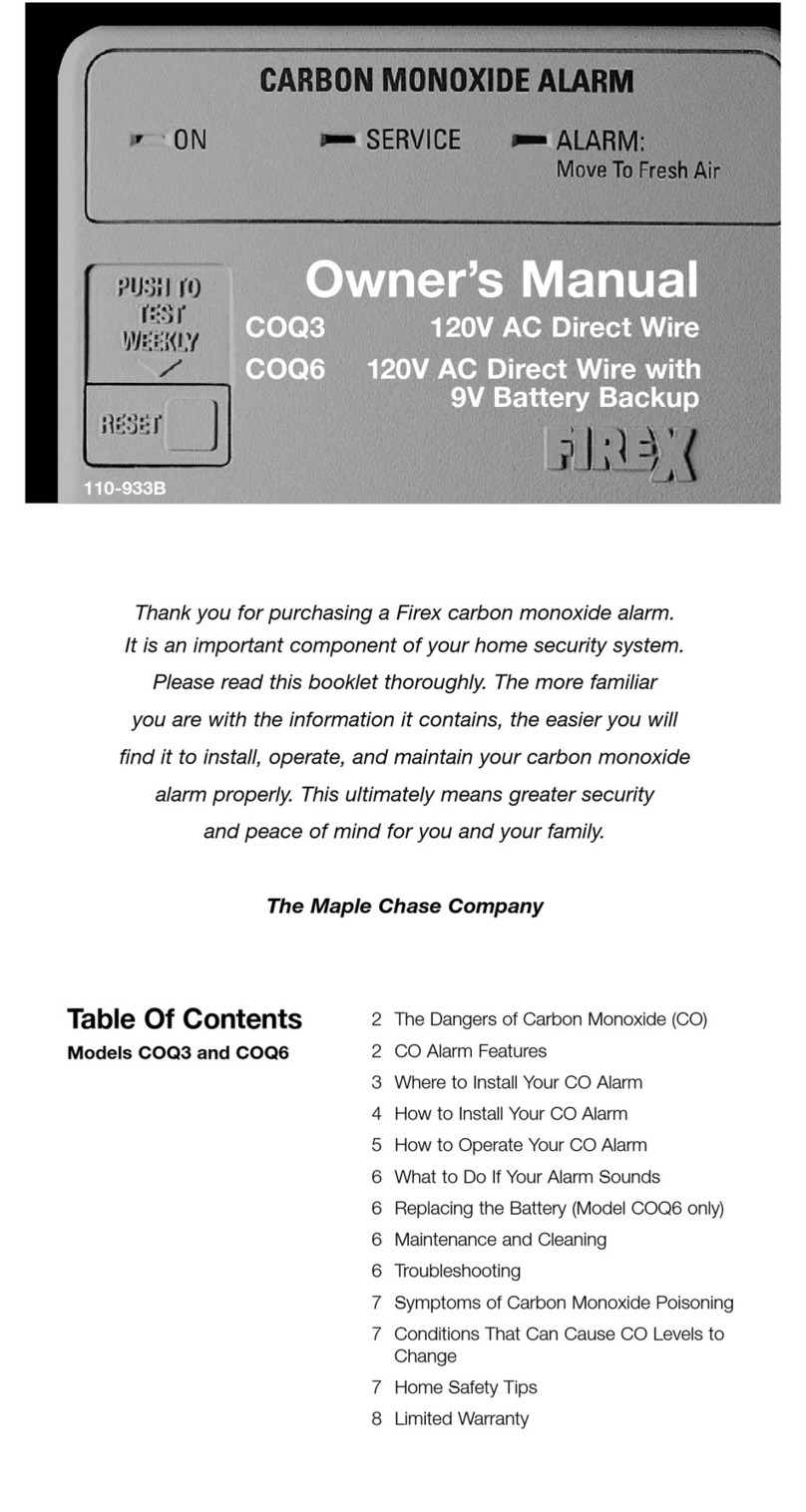4
Alignment
• When alarms are interconnected, all interconnected must be powered from a
single circuit.
• The SMK 23 has 2 external alignment marks to assist in lining up.
• If alarm is not being interconnected, the white interconnect cable from the alarm is
unused. Leave the encapsulated sheathing in place
• Connect flying leads from cable harness to terminal block.
• Secure base plate to SMK 23 or dry lining box, using screws provided.
• Plug in harness after pulling through central hole of base plate – if you need to
remove, squeeze on sides of connector.
• Check harness is secure into back of alarm.
• Slide on/off switch located on back of the alarm to “ON” position.
• Reinstall on alarm base plate affixed to wall or ceiling.When the alarm is rotated
onto its base, it will lock by default.To remove,insert a screwdriver onto locking lug
and depress and rotate alarm in “off”direction as illustrated.
• Push and release test button to verify battery operation.
• After connecting all alarms to be installed, reconnect mains supply and check green
L.E.D. is lit – indicating healthy AC supply.
• AC power must be applied to the alarm to reset the battery protection circuit which
has been shut off for shipping purposes.
5. Battery Checking/Charging
N
No
ot
te
e:
:
This CO alarm is not battery operated.
Battery backup will be limited until the battery has fully
charged. It may take up to 24 hours for the battery backup to fully charge.
W
W
a
a
r
r
n
n
i
i
n
n
g
g
:
Do not use any other type of rechargeable battery in your alarm or attempt to
recharge the battery pack yourself. Improper charging may even cause the battery pack
to overheat or leak, thus posing possible injury to the user. The Lithium-Ion battery is to
supply short term backup during a power cut.
Do not attempt to replace the battery as the alarm has no user serviceable parts.
Opening the alarm will invalidate the guarantee and could expose you to live parts.
(DIgital model only),During the first 10-hour initial charge period or,until the battery has charged,
"Lb" will be displayed along with the CO level (usually "0") and without an audible "chirp".
When the initial charge is complete,the "Lb" will disappear. If however,after 10 hours the battery
is not charging properly, "Lb" may continue to flashAND there will be an audible "chirp" once
every 15 seconds indicating the battery is not charging.
The unit will notify you of a battery error condition by flashing the red SERVICE LED,
amber Low Battery LED, and beeping once every 15 seconds (and on the Digital model
displaying “Lb”).
If this happens, the battery is discharged or has been
damaged. Ensure switch on back of unit is ON.
Ensure thatAC power is being supplied to the unit.If the
unit has been withoutAC power,the battery voltage will
be low and needs to be recharged.Turn the AC power on
and the battery will automatically re-charge. Note,a
discharged battery will require approximately 24 hours to
fully charge and provide the maximum protection while
on battery-back-up.
IfAC power is ON, and after 10 hours the red SERVICE LED and amber Low Battery LED
are still flashing, contact your Installer,landlord or Kidde Fyrnetics.
6. Initial Checking and Testing of Alarm
•Having energised circuit, press and release the test button – the alarm should sound
and other interconnected ones also, within a few seconds.
• Do this for all alarms.
• If any do not sound, isolate mains and recheck cabling.
• Advise the house-holder as to how to test the alarms, referring to enclosed
Operator Manual.
• Do not reconnect alarm toAC power with battery switch in“Off” position as unit
will beep every 15 seconds to alert you of flat/missing battery.
4. Installing the Alarm
